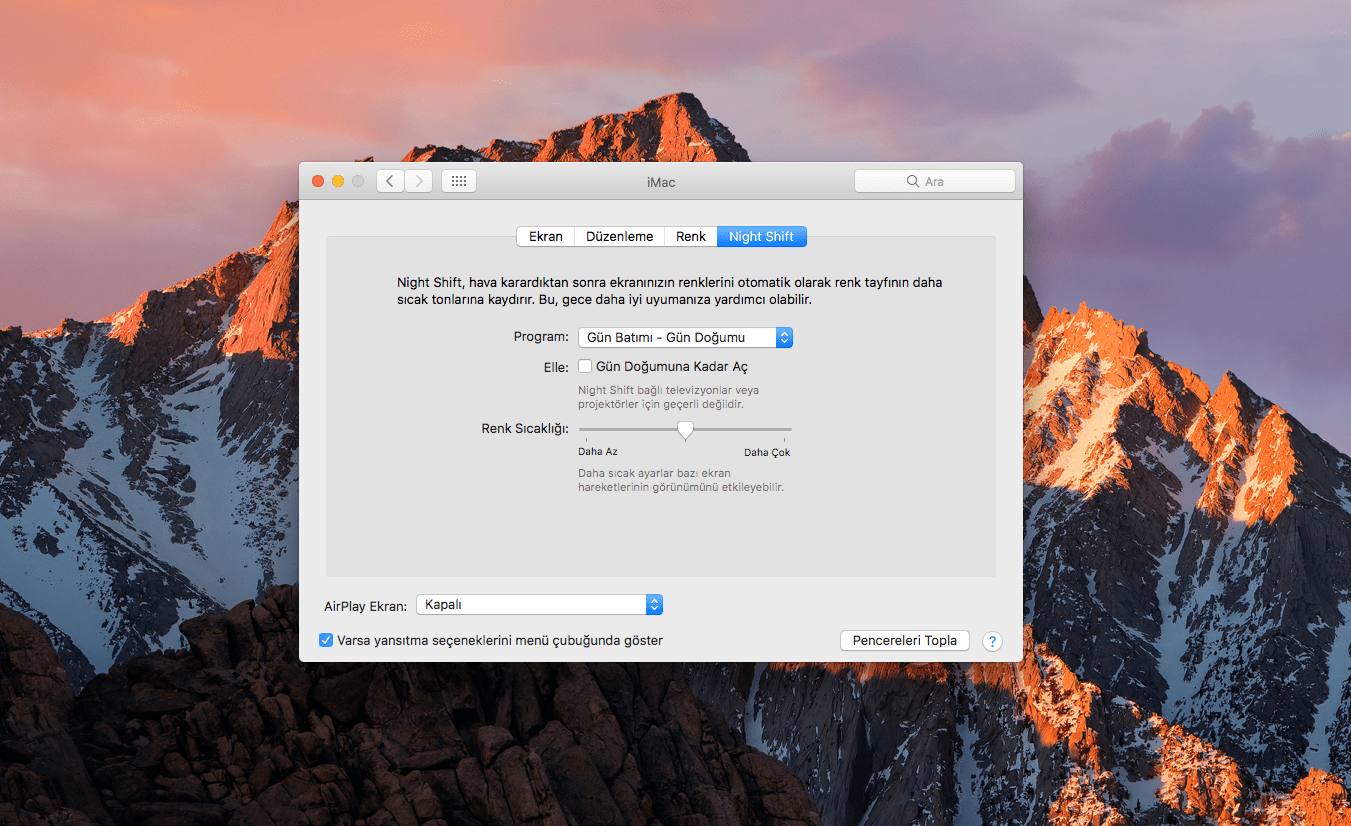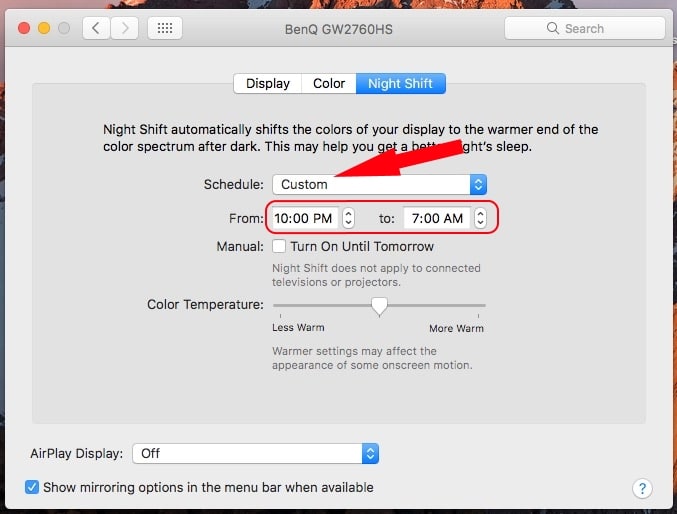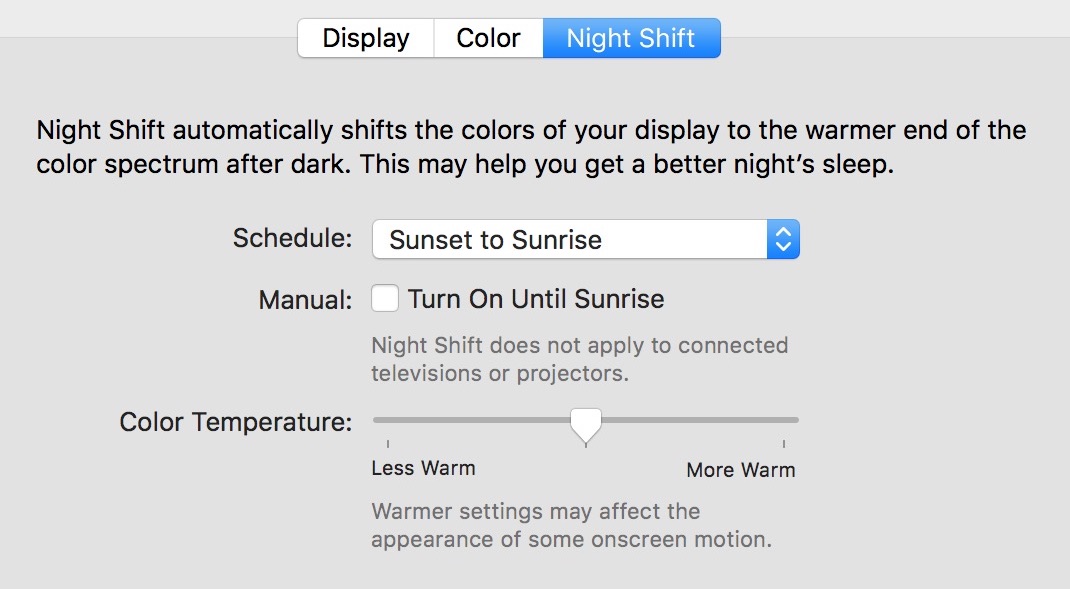

Just swipe to top of the Notification Center. By default you will not see the night shift option.

It will look like three horizontal lines with dots in front of each line. Click on the Notification Center icon on the top right corner of your Mac.One of the useful functions is to enable night shift mode from the Notification Center. Enable Night Shift from Notification CenterĪpple introduced many new features on macOS Mojave which is version 10.14.
WHERE TO GET NIGHT SHIFT FOR MAC PRO
Models – MacBook from early 2015, MacBook Air/Pro from mid 2012, Mac mini/iMac from late 2012 and Mac Pro from late 2013.ĭisplays – Apple also supports night shift mode on additional displays like Apple LED Cinema display, Apple Thunderbolt Display and LG UltraFine 4K/5K Displays.

Version – macOS Sierra 10.12.4 or greater There are three different ways to access night shift mode on your MacBook.īefore you try to enable night shift mode, checkout whether you have the MacBook that fulfills the following requirements: Related: Increase storage space on your Mac. This will help to cool your eyes and ensure you can have undisturbed sleep after working. Apple offers night shift or night mode to make the display warmer in dark. So it is necessary to take precautions when working on nighttime in order to protect your eyes. But working long during nighttime will not only affect your physical health but also mental health. Some people love to work on the Mac during nighttime without disturbance. Pro Tip: I’ve been writing about Mac and MacOS X since the beginning of the Macintosh system.MacBook is a companion for many of the people for the whole day. Don’t have Night Shift or want to get better control over its settings? Go into Control Panels and you’ll find this configuration screen as part of “Display”: So that’s how you wrest control of Night Shift as needed. Here’s how Apple describes it: “Banners and alerts will be hidden and notification sounds will be silenced.” In fact, lots of Mac users have it permanently enabled! Not sure what Do Not Disturb is? You’re not alone. There ya go! The handy shortcut for Night Shift on your MacOS X system – whether it’s an iMac, MacBook Pro, MacBook Air or any of the other systems running MacOS – and the similarly handy way to enable “Do Not Disturb” too. But… where’s the Night Shift control? Though there’s zero indicator this is a possibility, two-finger drag downward on the pane and you’ll reveal two additional controls: Schedule: Create a custom Night Shift schedule or have Night Shift turn on automatically from sunset to sunrise. You’ll see something like this:ĭidja ever click on the three bullet point horizontal bars on the right? Turns out that’s a shortcut that reveals a Notifications Pane on the right side of the window. Make sure that your Mac meets the system requirements for Night Shift, then follow these steps. Instead, look closely at the menu bar on your Mac system, specifically the top right. Modern problems, undoubtedly!įortunately, it turns out that there are some pretty neat shortcuts to temporarily disable Night Shift, though I’m going to start by pointing out the one place where I think I should be able to get to the settings but can’t: in Spotlight… I know because I do the same thing, editing videos late into an evening sometimes even while Night Shift is filtering out the blue. it’s bad enough we spend so much time of an evening looking at screens, but to be kicking up your brain chemistry because it thinks you’re still in daylight, well, it’s enough to lead to some pretty serious insomnia.Īs you point out, however, the problem with Night Shift is that if you need to accurately see the colors of a graphic, video, or photograph, it’s up to you to remember that Night Shift is going to affect color reproduction and potentially cause you to adjust the image to compensate. I’m also a fan of “Night Shift” on the Mac system it’s a smart and effortless way to filter out some of the blue spectrum light from your computer screen as the evening progresses so that your brain can slow down and you can get to sleep when you go to bed.


 0 kommentar(er)
0 kommentar(er)
